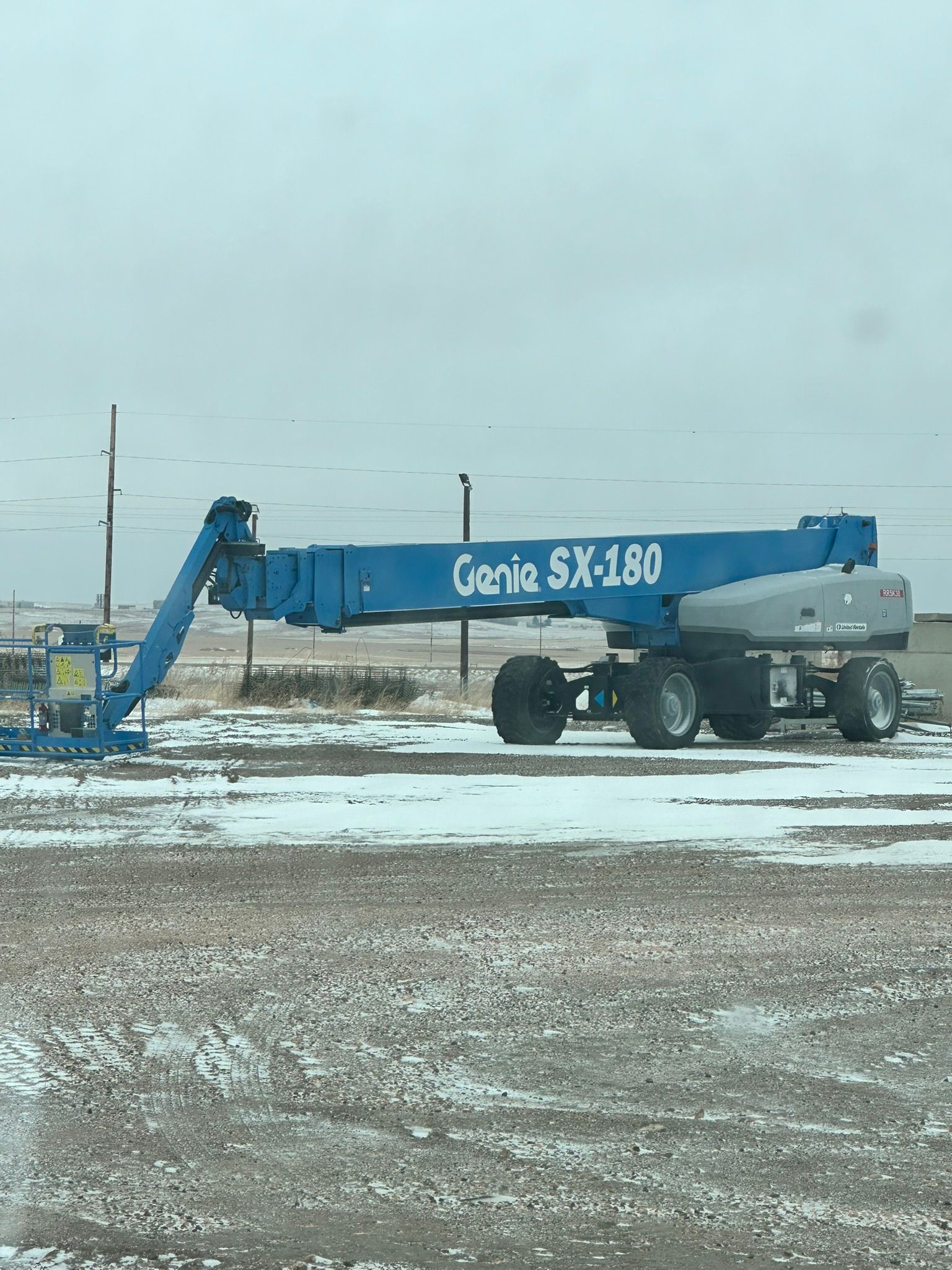When a Great Deal Isn’t: The Costly Truth About “Auction Bargains” on Used Lifts

That Genie Z-80/60 looked like a steal — until the real problems showed up.
A customer called us excited after picking up a Genie Z-80/60 at a local auction.
They’d “scored a deal” for less than half of retail — the paint looked good, the boom moved, and the auction yard said it was “ready to work.”
But within days of delivery, the excitement wore off. The lift wouldn’t stay level, alarms kept flashing, and it refused to drive more often than not.
By the time we were finished inspecting it, the customer realized what we already know:
Rental companies don’t sell equipment unless there’s a reason.
1. The Backstory: How “Deals” Get to the Auction Block
Rental fleets run equipment until it no longer meets reliability or cost-of-ownership standards. When a machine starts having intermittent electrical or hydraulic issues — the kind that take hours to chase down — it’s often easier to sell it off than repair it.
Before going to auction, many of these lifts are pieced together just enough to pass a basic operational test:
- A few error codes cleared,
- A weak component bypassed,
- Maybe some quick hydraulic cleanup for looks.
To an untrained eye, it seems fine.
To a technician with factory software, it tells a very different story.
2. The First Warning Signs — PCON and TCON Faults
As soon as we connected the Genie Analyzer, two codes stood out:
- PCON Fault – Platform Controller
- TCON Fault – Turntable Controller
These faults usually indicate communication loss between the control modules.
In other words, the lift’s brain can’t talk to its limbs.
The problem could be anywhere — damaged harnesses in the boom, corroded connectors, or internal controller failure. Tracing those issues can take hours, and the parts aren’t cheap.
In this case, the wiring had been spliced and re-spliced multiple times, with mismatched connectors from different machines. It looked like several partial repairs from over the years — enough to make it work for a few minutes, but not for long.
3. Platform Leveling Cylinder Leak — the Hidden Danger
While testing boom functions, we noticed the platform leveling cylinder wasn’t holding position.
Oil was seeping around the gland, and the platform kept drifting out of level.
That’s not just an inconvenience — it’s a safety issue.
If the platform tilts too far, the control system will shut down lift functions to prevent a tip-over. The customer’s lift would work for a bit, then stop mid-air until the level sensor timed out.
To fix it right, the cylinder needed to be removed, resealed, and recalibrated — but the customer had already spent their budget buying the lift.
4. Tires, Wiring, and “Cosmetic” Problems That Weren’t
The tires were badly weather-cracked and mismatched — a common sign of long outdoor storage.
Several hydraulic lines had been rerouted or replaced with non-OEM hoses.
Electrical connectors were spliced with automotive butt crimps instead of sealed Deutsch plugs.
Everywhere we looked, we found shortcuts.
It was clear the machine had been kept alive just long enough to drive across the auction ramp.
5. When Fixing Becomes Throwing Good Money After Bad
We gave the customer a complete estimate, including:
- New PCON and TCON modules
- Wiring harness sections
- Platform leveling cylinder reseal and setup
- Tire replacement
- Full calibration and safety test
The total was several times what they’d paid at auction.
They tried patching it up themselves, but each repair uncovered another issue.
Eventually, the machine sat more than it ran — and was finally sold for scrap.
6. The Real Lesson: Why Cheap Equipment Is Expensive
On paper, the Genie Z-80/60 seemed like a great buy.
But once you add up controller faults, harness repairs, hydraulic leaks, and obsolete software, that “cheap lift” became a money pit.
The real value isn’t just in what you pay up front — it’s in what you’ll have to pay later to make it safe, reliable, and compliant.
Auction units often look clean because they’ve been detailed and boosted just enough to function briefly.
They don’t go through proper inspection, and they rarely come with service records or calibration reports.
You’re buying someone else’s problem.
7. What Xtreme Pro Services Looks For in a Used Lift Inspection
When we inspect used equipment — especially Genie or JLG booms — we run:
- Full PCON/TCON diagnostics with OEM software
- Function tests for drive, steer, and boom circuits
- Platform leveling and tilt calibration checks
- Oil analysis on drive hubs and hydraulic tanks
- Load and safety interlock verification
- Visual inspection of wiring, cylinders, hoses, and tires
We don’t rely on how it looks — we rely on data.
If the machine fails multiple communication or hydraulic tests, we advise walking away or budgeting for a full rebuild. It’s better to know before you bid.
8. When to Call a Professional Before You Buy
Before spending thousands on an auction machine:
- Get the serial number and call us to check for open fault histories or service bulletins.
- Have a pre-purchase inspection done by a certified technician.
- Budget realistically — a 15-year-old lift may need electrical and hydraulic work even if it runs today.
A one-hour inspection can save you from a five-figure mistake.
9. The Takeaway
That customer’s Genie Z-80/60 could’ve been a reliable machine — if someone had caught the wiring and controller issues before the sale.
Instead, it became a parts donor and eventually went to scrap.
The next time you see a “deal” at an auction yard, remember:
If it’s cheap, there’s usually a reason.
Protect Your Investment with a Pre-Purchase Inspection
701-987-9877
xtremepro.services
Serving Williston, Tioga, Watford City, Sidney, Minot & surrounding areas
Xtreme Pro Services — diagnostics, inspections, and rebuilds done the right way.